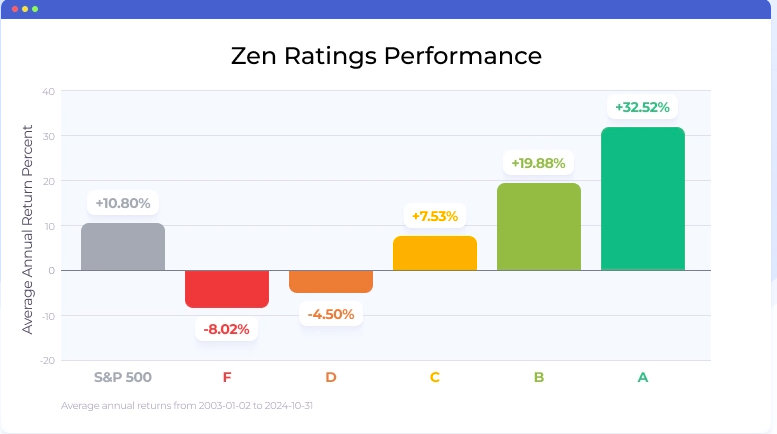20 Excellent Suggestions To Picking AI Stock Picker Analysis Sites
20 Excellent Suggestions To Picking AI Stock Picker Analysis Sites
Blog Article
Top 10 Tips For Evaluating The Security And Privacy Of Ai Platform For Analyzing And Predicting Trading Stocks
Since they are often handling sensitive financial information, and even personal information, the security and protection of the data is crucial. In the event of a data breach or misuse, it could lead to financial and reputational losses. Here are 10 best guidelines to determine the security and privacy of these websites.
1. Assess Data Encryption
Transmitting data encrypted Be sure that the platform is using secure protocols (e.g. SSL/TLS), to encrypt information transmitted between your devices and servers.
Encryption in rest: Verify sensitive information stored on platforms servers are secured with high-quality encryption standards.
Verify if the platform supports encryption end-to-end of sensitive data or communications.
2. Review the authentication mechanisms
Two-factor verification (copyright) : Check that the platform is compatible with copyright for an added layer of security.
Biometric authentication - Look to see if there are biometric options available for mobile app login (e.g. finger fingerprint or facial recognition).
Password policies - Check that the platform enforces strong password policies (e.g. length requirements and complexity requirements).
3. Examine for Compliance
Financial Regulations: Make sure that the platform complies to the relevant financial regulations.
Data protection laws: Check for the compliance of your data privacy laws (e.g. GDPR, GDPR, CCPA) If you're in or trading with regions that are covered by these laws.
Audit certifications. Check that the platform you are considering has passed third-party tests of security or has been certified.
4. Review Controls for Access to Data
Role-based Access: Be sure your platform uses control based on role (RBAC) in order to restrict data access to authorized users.
Permission levels: Determine if you can create granular permissions for various team members or users.
Activity monitoring: Make sure that the platform tracks and monitors every user's activity to identify any unusual behavior.
5. Assess the vulnerability of your organization.
Regular updates: Ensure the platform updates its software regularly to patch vulnerabilities.
Testing for penetration: Check whether the platform is subject to regular penetration testing to identify and fix security weaknesses.
Find bug bounty programs. These are created to inspire other security researchers (such such as Google) to share weaknesses.
6. Evaluate Data Privacy Policies
Transparency Read the privacy policies to understand what data you provide, used, or shared.
Data minimization - Make sure that the platform only collects the information that it needs for its operation.
Third-party Sharing: Verify whether the platform shares data with third-party providers and, if it does and under what conditions.
7. Secure API usage is important to verify
API security. It is important to ensure APIs utilize secure authentication methods (e.g. OAuth keys, API keys) and that all data is protected.
Rate limit: Make sure to check whether there are any rate limits in the API to prevent the use of force or misuse.
Examine the access logs to see if they are being monitored and audited for compliance.
8. Evaluate Incident Response and Recovery
Incident response plan - Ensure that the platform is equipped with a procedure to deal with data breaches or other security incidents.
Notification policies: Determine that the platform is able to notify users promptly in the event of a security breach.
Backups of data - Ensure that the platform has a plan in place for disaster recovery and regularly backs up data up.
9. Examine Physical Security Measures
Security of the data center Check that the servers on your platform are located in data centers that are equipped with physical security measures including security and access controls.
Redundancy Verify whether the platform has redundant systems for information in the event of hardware failures.
Geographic distribution: Determine if data is distributed over multiple geographical locations to ensure greater protection.
10. Test User Privacy Controls
Data deletion: Ensure that the platform allows you to delete your personal information permanently when you stop making use of the platform.
Privacy settings - Check to determine if the platform permits users to set privacy settings to let you control which data is shared with others or made public.
Check for anonymization. This is important if you are using the platform for analytics or machine-learning.
Bonus Tips
User reviews and reputation Review reviews and feedback from customers to assess the platform's performance in privacy and security.
Trial period - Try the demo or trial version of the platform to test its security features as well as privacy controls.
Customer Support: Check that the platform is able to offer a solid support service in the event of security issues.
With these suggestions, you can effectively assess the privacy and security of AI stock predicting/analyzing trading platforms making sure your personal information and financial details are protected. A secure platform not just protects assets, but builds trust in their service. Read the recommended this hyperlink about stock ai for more examples including trading ai, ai stock trading bot free, investment ai, market ai, ai stock, ai trading tools, ai stock market, ai stocks, ai for stock trading, chart ai trading assistant and more.
Top 10 Tips To Evaluate The Updates And Maintenance Of Ai Stock Predicting/Analyzing Trading Platforms
Monitoring the up-to-date and maintenance of AI-powered trading and stock prediction platforms is critical to ensure they remain effective, secure and in tune with the changing market conditions. These are the top ten guidelines for evaluating updates and maintenance procedures:
1. Updates Frequency
Tip: Determine how often your platform updates (e.g. monthly, quarterly, weekly).
Regular updates demonstrate active advancement of the product as well as an ability to react to market changes.
2. Transparency is a key element in the Release Notes
Review the release notes for your platform to determine what improvements and modifications were implemented.
Transparent release notes show the platform's dedication to continual improvements.
3. AI Model Retraining Schedule
Tip: Ask what frequency AI models are retrained based on new data.
Why? Markets evolve and models need to adapt to ensure accuracy and relevance.
4. Bug Fixes and Issue Resolution
Tip: Find out how fast the platform responds to bugs or issues that users report.
Why? Prompt bug fixes will ensure that the platform will remain operational and reliable.
5. Security Updates
TIP: Check if the platform updates regularly its security protocol to secure user data.
Cybersecurity is essential in the financial industry to avoid theft and fraud.
6. Integration of New Features
Tip: See the latest features added by the platform (e.g. advanced analytics or data sources, etc.) in response to feedback from users or market trends.
The reason: The updates to feature features demonstrate the ability to innovate and respond to user needs.
7. Backward Compatibility
Tips: Make sure that any the updates do not interfere with existing functionalities or require significant reconfiguration.
What is the reason? It is important to ensure smooth user interface transitions.
8. Communication with users during maintenance
You can assess the dissemination of maintenance schedules or downtimes to users.
The reason: Clear communication reduces disruptions and builds confidence.
9. Performance Monitoring, Optimization, and Analysis
TIP: Find out if the platform continuously monitors performance metrics (e.g. latency, latency and accuracy) and then optimizes its system.
Why: Constant optimization makes sure that the platform is robust and flexible.
10. Conformity to Regulatory Changes
Verify that the platform's features and policies have been updated to conform to the latest financial regulations or privacy laws for data.
What's the reason? Compliance with regulations is essential to avoid legal liabilities and ensure consumer trust.
Bonus Tip - User Feedback Integration
Find out if the platform incorporates feedback from its users in its maintenance and update processes. This demonstrates a user centric approach, and a desire for improving.
If you evaluate these elements by evaluating these aspects, you can be sure that the AI trade prediction and stock trading platform you choose to use is well-maintained up-to-date and able to adapt to changing market dynamics. Check out the recommended best stock prediction website examples for site recommendations including ai options, chart analysis ai, ai stock investing, ai in stock market, ai copyright signals, how to use ai for stock trading, best stock prediction website, how to use ai for stock trading, chart ai trading, best ai stocks to buy now and more.